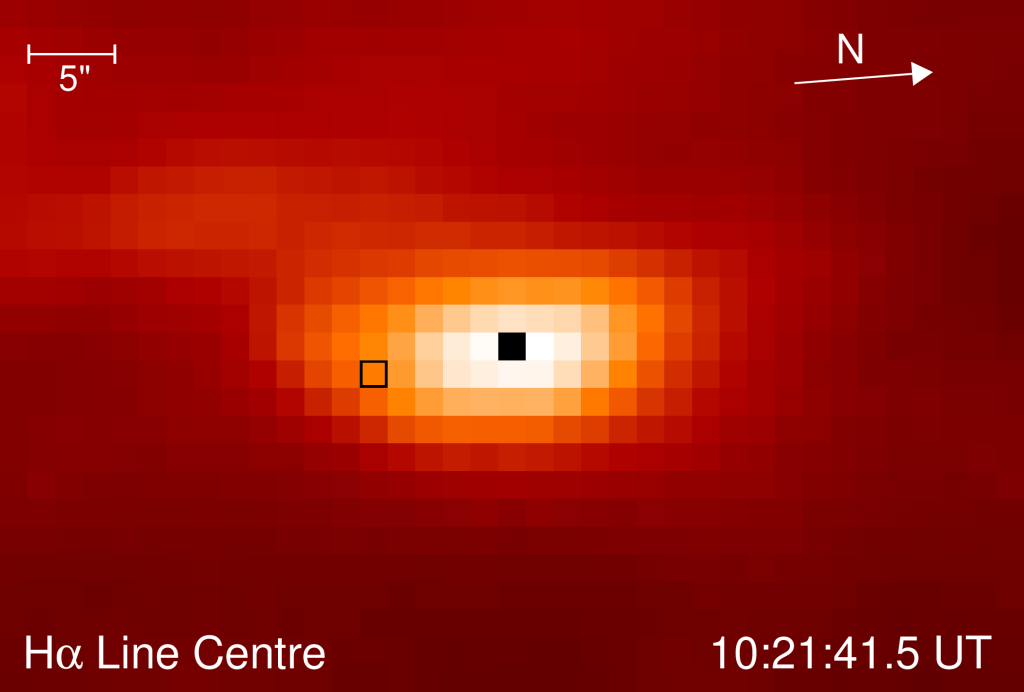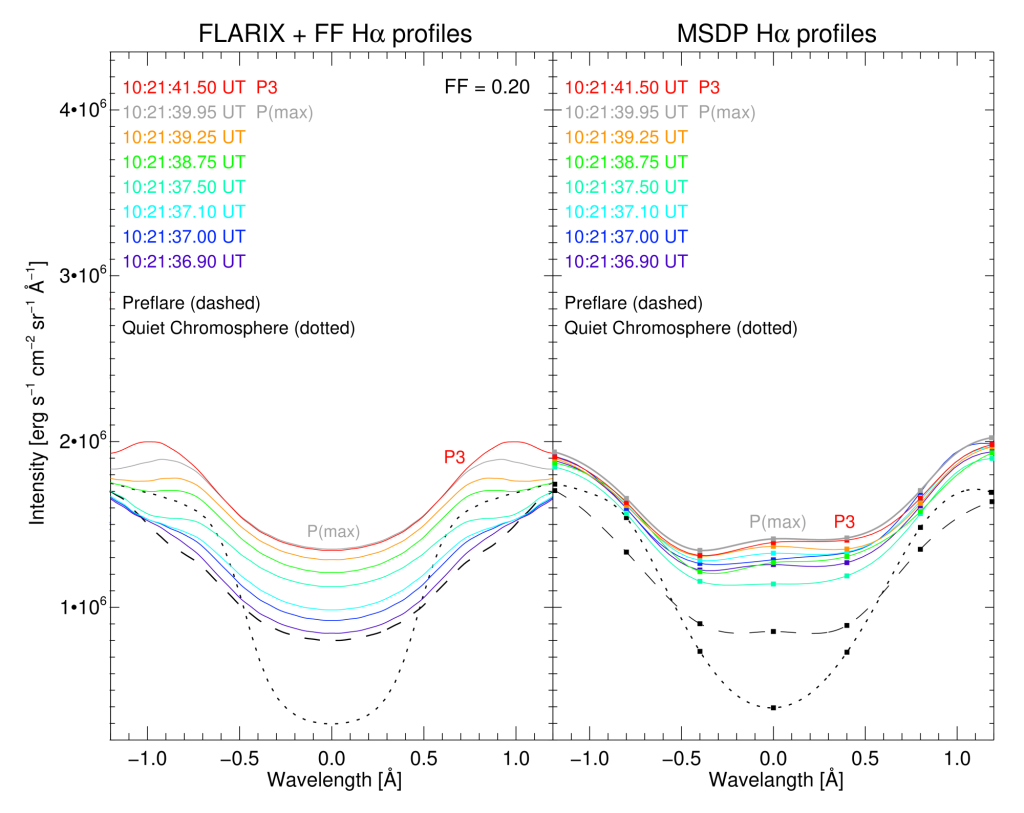First Comparison of FLARIX Simulations with MSDP Observation of the C1.6 Solar Flare in the H-alpha Line of Hydrogen
Solar flares are the most dynamic active phenomena observed on the Sun. The large quantity of energy emitted during their emergence may not only influence changes in emissions of electromagnetic radiation from the Sun or cause eruptions of enormous amounts of solar plasma, but it may also have direct influence on the surroundings of Earth, its magnetic field and ionosphere.
In the work discussed here, a flare emission analysis of the radiation emitted by the solar chromosphere in the H-alpha spectral line of hydrogen (656.3 nm) has been carried out using heliophysical observations as well as numerical modeling of the solar atmosphere heated by particle (electron) beams during the initial phase of the flare. For the analysis spectroscopic MSDP observations were used, made with very high temporal resolution (50 ms) at the Astronomical Observatory in Białków (belonging to the Institute of Astronomy of the University of Wrocław), as well as a time-dependent radial-hydrodynamic (RHD) model of the solar atmosphere FLARIX used by the research team led by prof. P. Heinzel from the Astronomical Institute of the Czech Academy of Sciences in Ondřejov – currently also employed at UWr, as part of the Incubator of Scientific Excellence – Activity of the Sun and Stars.

For the first time it was possible to combine modeling with the FLARIX code (based on the parameters of a real, specific solar flare) with spectroscopic observations of this flare made at the observatory in Białków. For the purpose of modeling rapid (sub-second) emission changes during the initial phase of a flare an innovative method of modulating the parameters of electron beams, obtained from 4-second X-ray spectra (from the RHESSI satellite) for sub-second time resolutions, was used.

The observed and synthetic (numeric) changes in the flare’s brightness during the impulse phase were consistent (save for minor deviations). Taking into consideration an extra factor – the so-called fill factor (stemming among others from the limited spatial resolution of the observation), the flare profiles of the H-alpha spectral line of hydrogen obtained from modeling also coincided well with changes in observed profiles. The paper also includes a detailed discussion of factors that may affect the differences that occur between numerical models of the solar atmosphere and actual observations.
The paper titled First Comparison of FLARIX Simulations with MSDP Observation of the C1.6 Solar Flare in the H-alpha Line of Hydrogen by: Radziszewski K., Heinzel P., Kašparová J., Litwicka M., Berlicki A., Rudawy P., Falewicz R. was published in the Astrophysical Journal 2024, 977, 132
